The marathon boom really got going in the early 1980s in the UK. The 1980s were a boom time for running magazines too, fed by the surge in popular interest in road running. New titles sprang up that catered for a new type of runner, the non-elite distance runner or jogger. One of the first of these was “Jogging”, published in March 1979. Many of the new magazines were short-lived, only lasting a few years before merging with other titles or disappearing altogether.
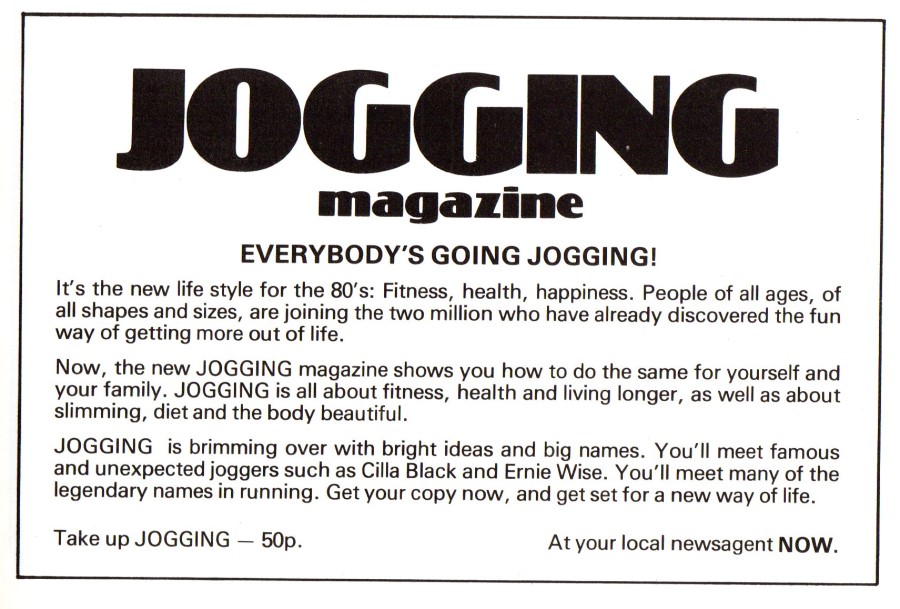
Advertisement for the first issue of Jogging magazine in Athletics Weekly 17th February 1979
When Jogging magazine appeared, road running was not the mass participation sport it is today. 10 miles was the most popular distance for road races in the 1970s. The Michelin 10 mile road race held on 3rd June 1979 attracted a record number of entries for an English road race, 1,100, and had 723 finishers1. Other races were much smaller. The 1979 Notts 10, a popular local 10 mile race, had just 79 finishers2. The long-standing Finchley 20 (see road running in the UK in the 1950s), held on 22nd April 1979, was limited to 350 entries3. The marathon had not yet caught the public imagination. When the 1977 International Milton Keynes Marathon attracted a record entry of 340 this was described as “the largest marathon field of the year”.4
The start of the marathon boom
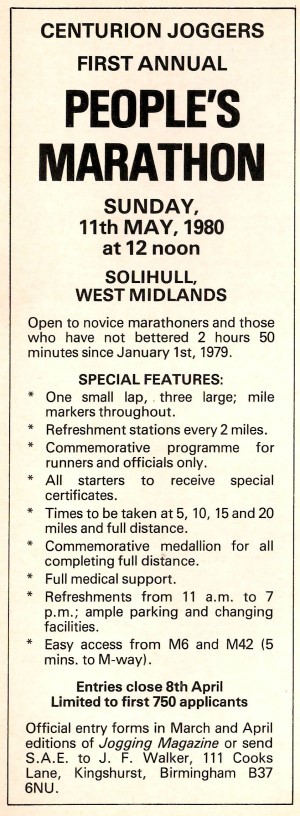
Interest in road running grew enormously in the UK in the late 1970s and early 1980s. Jim Fixx’s book “The Complete Book of Running” was published in the USA in 1977 and in the UK in 1979. It was a huge bestseller and played a big part in creating the notion of jogging – distance running for fitness, health and fun. Recreational running was open to a much wider range of people, not just the mainly male members of athletics clubs who were lifelong distance runners. Race organisers responded to the new trend with “fun runs” and races open to “joggers” as well as “runners” with more generous time limits which accommodated slower paces.
The marathon distance was not well known to the general public in the UK until the People’s Marathon in 1980 and the inaugural London Marathon in 1981 framed the marathon as a distance open to everyone and an aspirational goal for recreational runners. The People’s Marathon in Birmingham took place for the first time on 11th May 1980 and made a point of attracting first timers and slower runners. Marathoners with a recent time under 2 hours 50 minutes were not accepted. Prior to this it was not uncommon for marathons to have time limits of 3 hours or 3 hour 30 minutes. The inaugural 1981 London Marathon on 29th March attracted enormous interest and the BBC commentary on the day made a point of describing it as “the people’s marathon”. This was followed in June by the inaugural Great North Run which had 12,000 runners, a number which would have been unimaginable just a few years before.
In 1979, there were probably fewer than 20 marathons in the UK, by 1982 there were over a hundred5. By the end of 1982, thousands of novice runners had had a go at the distance.
Advertisement for the first People’s Marathon, Athletics Weekly, 23rd February 1980
Women’s participation in road running
Women’s participation in road running had only just got started. For most of the twentieth century, women were banned from distances longer than a few kilometres due partly to the belief that endurance sport would be harmful to their health, particularly their reproductive health. Women in the UK were excluded from most road races until late 1975. Men and women were strictly prohibited from racing against each other. Whilst some women had started to run longer distances, including the marathon, from October 1975, not all road races admitted women and participation numbers were small. The first Women’s Amateur Athletic Association Marathon Championship did not take place until 1978.
The growth of the jogging movement was appealing to women who were not runners but wanted to take it up. Its focus on fitness, health and personal fulfilment made running more accessible to women, as it became more socially acceptable.
This article looks at magazine titles which started just before or during the marathon boom and shares what I have been able to find out about them. I will also reflect in conclusion on the extent to which women’s voices were represented in these magazines.
I have listed the magazines by date of first publication. They were all monthly publications unless stated otherwise. There are gaps in the information as I have not acquired copies of all the magazines. If you can help me fill any of the gaps, please get in touch.
Road and Country Enthusiast (R.A.C.E) and Athlete’s World
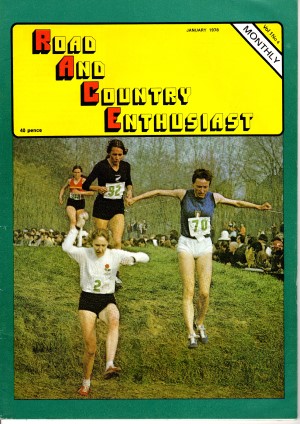
First issue: probably October 1977
Last issue: not known but the magazine was still in print in December 1984
Editor: Ernie Barrett
Contributors (April 1979): Ron Hill, Vince Regan, Robin H.C. Thomas, Peter Markham, Dave Walsh, Alistair Aitken, John Flatters, Bill Sutherland
Photographer: Mark Shearman
Illustrations: Paul Hart
Publisher: Wiskcrown Limited, Canvey Island, Essex
Content
The magazine started as Road and Country Enthusiast, later shortened to R.A.C.E. It changed its name to Athlete’s World in August 1979. From November 1978, it incorporated the title Veteris. This had started life as the magazine of the Association of Veteran Athletes in May 1973. It had been published by Wiskcrown Limited for some time before it was merged into R.A.C.E.
R.A.C.E initially focused on road running, fell running, cross country and race walking. From April 1979, it added coverage of track races and a four-page jogging section. The early editions featured lists of all the finishers in races. Other publications usually only featured the top finishers. It is also unusual in that it regularly featured cartoons.
Jogging
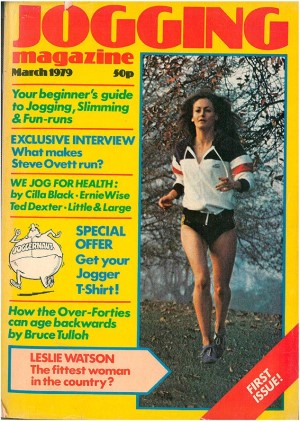
First issue: March 1979
Last issue: June 1980
Editor: the first editor was John Bryant. Andy Etchells replaced him.
Consulting Editor: Robert Troop
Contributors (April 1979): John Bryant, Andy Etchells, Rosemary Cox, Alan Hitchings, Heather Thomas, Cliff Temple, Bruce Tulloh, Peter King, Melanie Rockall
Photographer (April 1979): several including Gerry Granham
Illustrations: Geoff Waterhouse (the “Joggernaut” cartoon)
Publisher: Sylvester Stein
Content
The inaugural issue of the magazine features a photo of Scottish marathon runner Leslie Watson running. The photo is somewhat different to the cover photos of many other magazines in that it is not a race photo and Watson is shown running on grass rather than on road. The themes of running for fun and fitness are clearly signposted on the cover. The magazine was different from most other publications at the time in that it focused on fitness and health, for example it had a regular healthy recipes feature. Jogging also included personal accounts from men and women who were new to running. Unlike other magazines, it did not focus on performance and didn’t publish race results.
Jogging was rebranded as Running magazine in 1980, changing to a bimonthly publication. The first issue of Running was July/August 1980.
Athletics Monthly
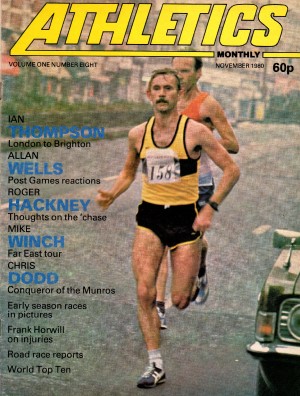
First issue: April 1980
Last issue: not known, the oldest issue I have is from April 1981.
Editor: Geoff Harrold
Other Editors: Dave Cocksedge (Features), Rosemary Harrold (Women’s), Stan Allen (Veterans)
Contributors (November 1980): Keith Nelson, Vince Regan, Ray Morland, Lyn Barnes, John Lees (walking), Mike Winch (columnist), Frank Horwill, Alistair Aitken, Phil Thomas, Jack Harris (coaching)
Publisher: A.C.M. Webb (Publishing) Co. Ltd., Brighton
Content
Athletics Monthly covered track and field, road walking, cross country, road running and fell racing. Content included news, opinion pieces, detailed reports for a small number of races and athletics meetings, athlete interviews and profiles, coaching advice.
Running
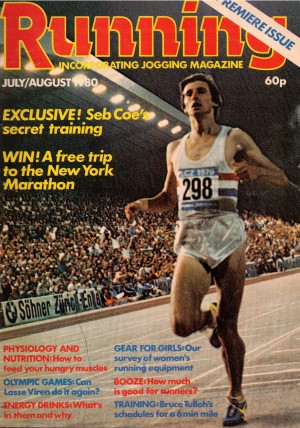
First issue: July/August 1980.
Last issue: 1993, it was still in print in July 1993.
Editor: Andy Etchells. Nick Troop from 1986.
Consulting Editor: Robert Troop
Contributing Editors (July/August 1980): Bruce Tulloh, Dave Bedford, Vivian Grisogono, Cliff Temple
Contributing Photographer: Mark Shearman
Cartoonist: Geoff Waterhouse
Columnist: Red Daniells
Statistics: Roger Gynn
Publisher: BEL Ltd
Content
From July/August 1980, Jogging rebranded as Running and changed from a monthly to a bimonthly magazine with more pages. Running initially retained the focus on health and fitness rather than on performance. Over time, the content changed to focus more on road racing (rather than fun runs) and performance. The recipes feature and “Joggernaut” cartoon were dropped. There was still some jogging content but the feel of the magazine changed.
Running magazine merged with the Runner’s World when the British edition launched in November 1993.6 Nick Troop became the first editor of Runner’s World UK.
Running Review
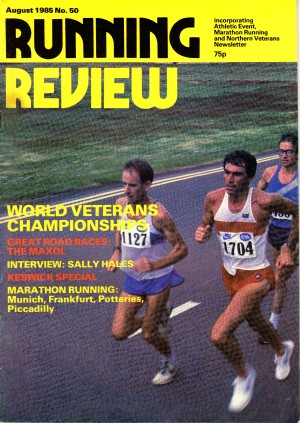
First issue: may have been July 1981
Last issue: not known, but it was still in print in May 1987.
Editor: Kevin Fahey
Contributors (August 1985): Ron Hill, Frank Horwill, Bob Phillips, Chris Norris, Ken Heathcote, Vince Regan, John Walsh, Fraser Clyne, Neil Shuttleworth, Martin Duff
Publisher: Ron Hill Sports Ltd., Hyde, Cheshire
Content
The magazine was published in approximately A4 format. The August 1985 issue (which I have) states that Running Review incorporates Athletic Event (a race listing publication), Marathon Running and Northern Veterans Newsletter. Content includes: “Ron Hill’s Ramblings”, news, injury, training and nutrition advice, race reports with truncated results, interviews with athletes, Scottish news, Welsh news, “on the fells” section, veterans section, events listing (Athletic Event).
Marathon and Distance Runner
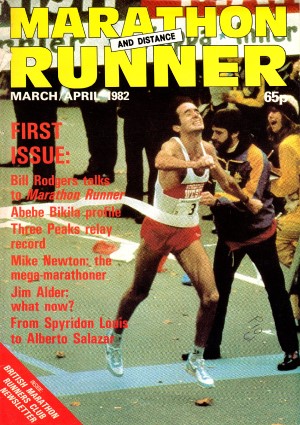
First issue: March 1982
Last issue: January 1987
Editor: Geoff Harrold (who had previously edited Athletics Monthly)
Contributors (January 1985): Andy Milroy (ultra news), Glenn Latimer, Ian Weightman, Debora Colvin, Maurice Dillon (ultramarathons), Ivan Berenyi, Keith Walker, Steve Trew, Alistair Aitken, Gerald Donaldson, Richard Angrove, Jack Harris, Stan Allen
Publisher: Peterson Publishing Co. Ltd, Droitwich, Worcestershire
Content
Marathon and Distance Runner covered cross country, fell running, road running, ultra marathons and triathlons. Race walking and track running were not usually covered. Content included ultra news, reports of major races, interviews with athletes, event calendar, the history of running events, short race reports for a few road races with truncated results, veterans’ road races, training advice. There were often extended articles on topics affecting the sport, for example, Eastern European attitudes to the women’s marathon. Marathon and Distance Runner stands out from other magazines for its coverage of the women’s marathon.
In 1987 Marathon and Distance Runner merged with Running magazine which itself merged with Runner’s World six years later.
Today’s Runner
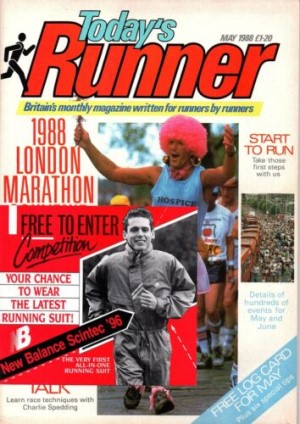
First issue: not known, was in print in 1983
Last issue: not known, was in print in 1993
Content
It may have merged with Runner’s World when the British edition was launched in November 1993.
Scotland’s Runner
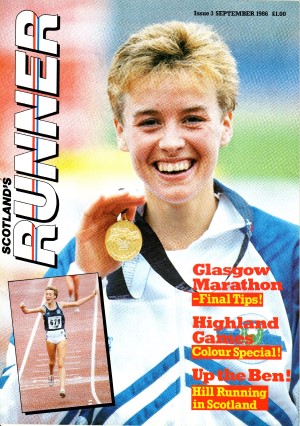
First issue: July 1986
Last issue: July 1993
Editors: Alan Campbell, Doug Gillon (Sports Editor at The Glasgow Herald), Stewart Macintosh
Contributors (September 1986): Lynda Bain, Fraser Clyne, Bob Holmes, Graeme Smith, Sandy Sutherland, Jim Wilkie, Linda Young
Publisher: ScotRun Publications Ltd, Glasgow
Content
The first issue of Scotland’s Runner appeared just before the 1986 Commonwealth Games in Edinburgh7. It is the only one of the magazines to have been published in Scotland and it had different contributors to the English magazines. Unusually the contributors included two women, one of whom, Lynda Bain, was one of the UK’s top marathon runners in the first half of the 1980s.
Content included opinion pieces, news, interviews and athlete profiles, advice on injuries and nutrition, race and athletics event reports, athletics history, truncated race results, events diary
All issues of Scotland’s Runner are available online on the Scottish Athletics Road Running and Cross Country Commission website. The website describes it as “the definitive magazine for Scottish athletics for seven plus great years“.
Athletics Today
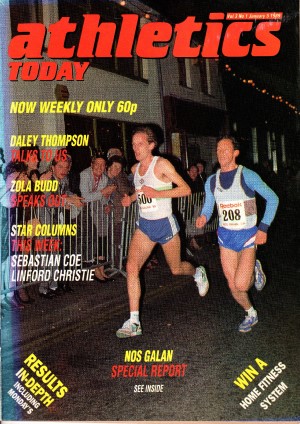
First issue: January 1987
Last issue: 1994
Editors: Randall Northam and Mel Watman, Chief Sub-Editor: Brian Smyth
Contributors (5th January 1989): Vic Robbie, Neil Wilson (The Independent), Richard Lyston, Pat Butcher (The Times), Peter Nichols, Jack Fitzgerald, Alistair Aitken, Colin Young
Photographs: Mark Shearman
Publisher: Athletics Today Publications Limited, Kingston-upon-Thames, Surrey.
Content
One of the most significant points about Athletics Today was that from 5th January 1989, after two years as a monthly publication, it changed to weekly, challenging Athletics Weekly which had been published weekly since 1950. In the pre-internet days of the 1980s, Athletics Weekly with its comprehensive coverage was one of the best ways to keep up to date. Mel Watman, one of Athletics Today’s two Co-Editors, had been on the staff at Athletics Weekly from 1961 and had been its Editor from 1968 to 19868. The purchase and relaunch of Athletics Weekly in 1987 led to many staff leaving.9
The editorial comment for the first weekly issue of Athletics Today stated: “It is our intention that Athletics Today will stand for all that’s best in athletics journalism“. The magazine was able to attract high profile columnists and contributors: athletes such as Sebastian Coe and Linford Christie and journalists such as John Rodda of the Guardian and Alan Parry of ITV. The main focus seemed to be UK and international track and field with some coverage of cross country, race walking and road races. The content included news, interviews, athlete profiles, guest columns, coaching articles, brief race reports with truncated results.
Women’s voices in the athletics press
The athletics press in the 1980s, and in previous decades, was dominated by men. This applied to both the specialist magazines and newspaper journalism. Editors and most contributors were men. Very few of the magazines launched during the marathon boom had regular female contributors. Many of the male journalists wrote for several magazines, for example, Alistair Aitken wrote for the Athletics Weekly, R.A.C.E, Athletics Monthly, Marathon and Distance Runner, Athletics Today and no doubt other publications too.
The fact that men were doing the editing and writing does not mean that women’s athletics was overlooked. My impression is that athletics magazines have tended to focus on performance, whether male or female. This did not mean equal coverage in terms of the number of pages or articles because for most of the twentieth century women had far fewer opportunities to compete than men and there were therefore fewer events for press to cover. By the 1980s, women’s opportunities were expanding but we should not forget that the women’s marathon was not added to the Olympic Games programme until 1984 and the 10000m and 5000m were not added until 1988 and 1996 respectively (see An Olympics timeline – women’s running).
How were women’s voices heard in athletics magazines?
There was a small number of regular female contributors. Scotland’s Runner had two regular female contributors, Lynda Bain and Linda Young. Lynda Bain’s column was called “Women on the run”. Athletics Today had a regular column by Samantha Jones on juniors.
Jogging magazine was aimed firmly at the recreational runner and had female contributors, including women writing about their experiences of taking up running. Running magazine did not tend to feature this type of content. It did feature a regular column from Madge Sharples in 1981/82. Madge Sharples was a 64-year-old runner who had come to prominence thanks to the BBC TV coverage of the inaugural London Marathon. Alison Turnbull became Assistant Editor of Running at some point after 1981. She wrote regular articles on women’s running.
Several magazines featured occasional articles by women. For example, in January 1986 Marathon and Distance Runner had a “Letter from America” column by marathon runner Priscilla Welch who was training in Boulder, Colorado. The August 1986 issue of Scotland’s Runner included an article by Joyce Kerr entitled “Will women catch the men?”.
Interviews with female athletes, usually elite athletes, gave insights into how they viewed their own performance and women’s participation in road running. For example, in an interview in Marathon and Distance Runner in May/June 1982, distance runner Julie Barleycorn was asked about people’s attitudes to seeing women out running. She replied, “I think their attitude has changed a bit, during the last few years – especially since the London Marathon. They are getting used to runners running along the roads but they used to shout things out….now not so much.” Athlete profiles often contained quotations from the subject.
Letters pages
Most magazines had letters pages. Letters from women tend to stand out because of their rarity. Athletics Monthly’s April 1981 issue carried a letter from Veronique Marot entitled “Veronique not unknown”. Marot had won the Barnsley Marathon in November 1980 and was clearly annoyed that experienced athletics journalist Vince Regan had said in his race report in the February issue that he had never heard of her. “Perhaps he doesn’t follow women’s races“, she remarked. Marot had a lot more to say but unfortunately the letter was cut to one short paragraph.
I only have two copies of Jogging magazine but it seems that it often had letters from women. For example, women wrote in about forming new jogging groups. After the magazine rebranded as Running, it attracted fewer letters from women. Some issues didn’t have any letters from women. However, it still featured more than most of the other magazines.
In the September 1986 issue of Scotland’s Runner, four of the nine letters are from women. One, Fiona Harrison, commented “Congratulations too for your coverage of women runners. For too long, female sport has had a second rate press compared to that given to male athletes. Strong views and a woman on the second issue cover – keep it running!” Another correspondent, Glenys Dawkins, criticises an article by Linda Young which she regards as sexist and offensive. The Editor responded to say that the article was intended to be light-hearted and the magazine intends to keep giving coverage to women “because we recognise that they get a raw deal in other sports magazines“. It seems likely that the fact that the magazine featured regular female contributors made women feel more inclined to write in. It marked out the magazine as a more welcoming space for women than most.
If you can fill in any of the gaps with regards to publication dates etc. please do get in touch.
Footnotes
1. Michelin 10 race report, Kenyon is ‘King of the Road’ after Michelin 10, Vince Regan, R.A.C.E magazine, August 1979
2. Notts 10 results, Notts 10 The First Twenty Years, Simon Elliott and Chris Moore, Notts AC, 1992
3. Finchley 20 results, letter from A.C.R. Chidley, Organising Secretary of Hillingdon AC, R.A.C.E. February 1979. Complaints had been “received by the police from residents that the race was now too large for the roads it used” leading to a move to Sunday afternoon and a limit on numbers.
4. The 1977 race was the third Milton Keynes Marathon and the first time that women had been admitted. Road Runners Club newsletters, April 1977 and August 1977.
5. A list published by Don Shelley, National Marathon Organiser, in Athletics Weekly, 24th February 1979, had 15 marathon races, four of which did not admit women. “In 1982 there were over 100 marathons in the UK, nearly twice as many as in 1981 and way up on previous years.” “Eighteeen Years of the Harlow Marathon”, by Ian Linton, Marathon and Distance Runner, May 1983. I have collated a list of marathons held in 1982 and have found 94 so far.
6. “50 Years of Runner’s World Covers“, 1st February 2017. This article states that Jogging magazine became the first UK edition of Runner’s World. However, close inspection of the cover shows that it was Running magazine not Jogging that was incorporated into the new publication.
7. Read more about Scotland’s Runner’s coverage of the 1986 Commonwealth Games on the Scottish Distance Running History website.
8. Mel Watman’s obituary, England Athletics, 21st September 2021
9. Wikipedia entry on Athletics Weekly, accessed 1st June 2022.
Thanks
With thanks to Terry Lonergan who provided information about some of the magazines and Nick Hume for information and images of some of the front covers.
Thank you to Dave Clark who gave me many athletics magazines from his collection, including a complete set of Marathon and Distance Runner. Dave is the third runner on the cover of Running Review from August 1985 above. It depicts the leaders in the 18th World Veterans Championships 25km race which he won.
Thank you to Frank Hilton Brooks who passed on some of his magazines to me in 2023, including copies of Running and Running Review. This enabled me to add more information to this article.
Other articles
Articles on the history of women’s marathon running
Road running in the UK in the 1950s
Athletic Review 1947 – post-war running
A history of Nottinghamshire running clubs
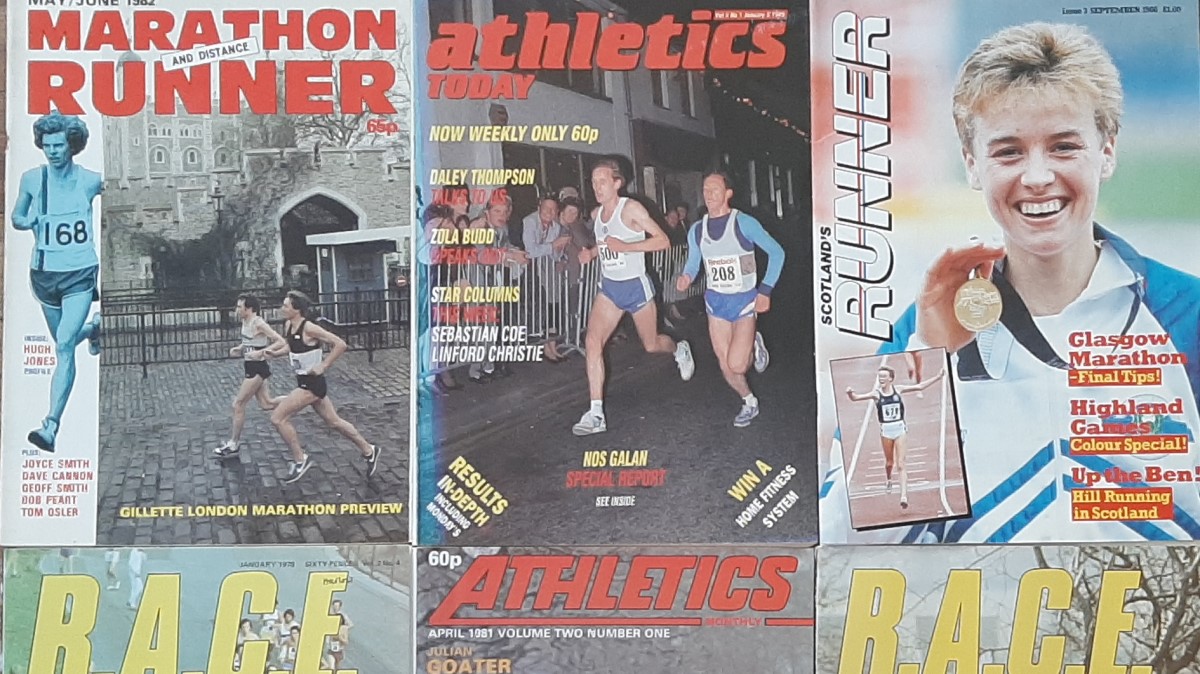
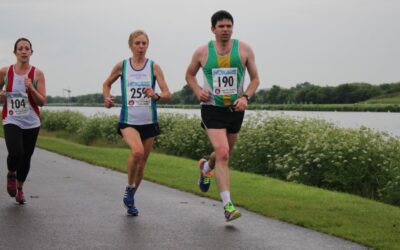
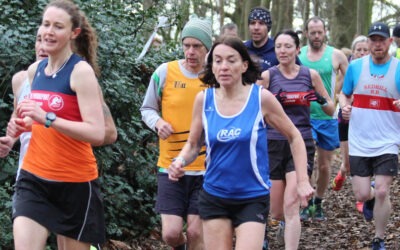
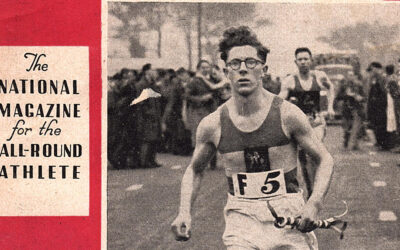
0 Comments